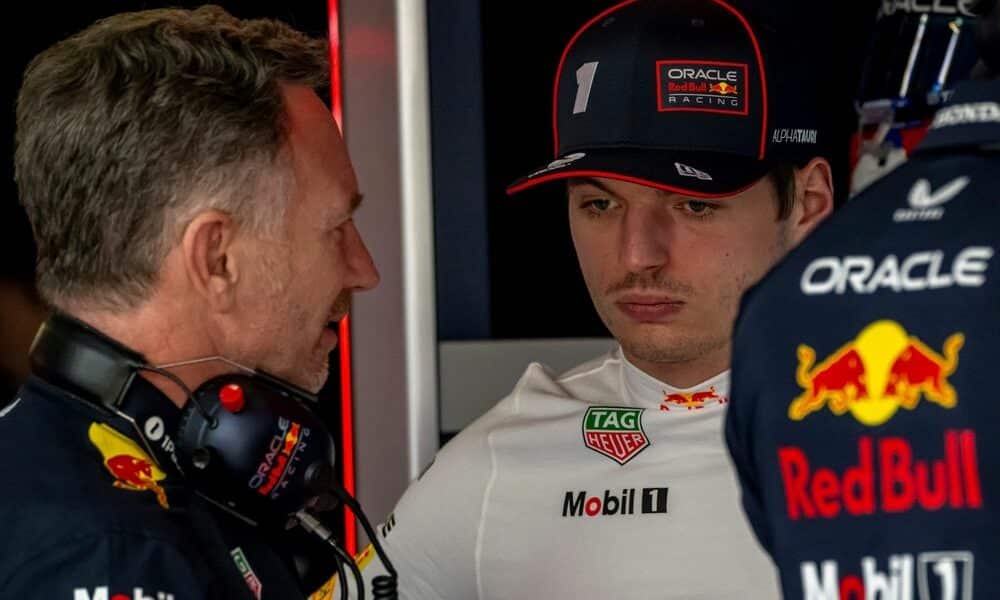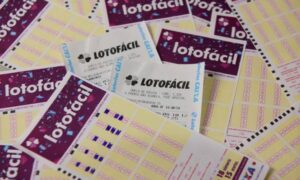The 2025 Formula 1 season has kicked off with unexpected hurdles for Red Bull, a team that has dominated the sport in recent years. Max Verstappen, the four-time world champion, has made no secret of his frustration with the RB21, a car plagued by handling and balance issues since the opening races. Rather than pointing fingers at the drivers, the Dutchman has been vocal about the need for the team to focus on technical solutions. His comments come after a rocky start marked by controversial driver swaps between Red Bull and its sister team, Racing Bulls, sparking heated discussions across the paddock and social media.
Red Bull’s early season woes have been glaring. After just two races, Liam Lawson, Verstappen’s teammate in the main squad, was demoted to Racing Bulls, with Yuki Tsunoda moving up to take his place starting at the Japanese Grand Prix. The swift decision caught many off guard, raising eyebrows among analysts and fans alike. For some, giving Lawson such a short window to adapt to the top-tier car seemed harsh, especially given the team’s existing technical struggles. Verstappen, however, sidestepped a deep dive into the swap, emphasizing that the RB21’s development should take precedence over cockpit changes.
Pressure is nothing new for Red Bull, but the current situation stands in stark contrast to their recent years of supremacy. Known for his bluntness, Verstappen recently spent time at the team’s UK factory, collaborating with engineers to pinpoint the car’s weaknesses. He described the RB21 as twitchy and unstable, with problems shifting depending on track conditions, tires, and corner types. The scenario paints a picture of a team grappling to maintain its edge in 2025, while rivals like Ferrari and McLaren capitalize on their early consistency.
Technical troubles take center stage
Fixing the RB21 has become Verstappen’s top priority, as he sees the car as the root of Red Bull’s struggles. The champion noted that its instability hampers performance across various phases of a race, from low-speed corners to bumpier sections with curbs. Overheating tires and a lack of balance have cost the team dearly, a fact laid bare in recent grands prix. For Verstappen, improving drivability is key to unlocking competitiveness, which would also ease the burden on whoever occupies the second seat.
Verstappen’s critique isn’t without nuance. He acknowledged the hard work of the technical crew, who are pushing to address the issues. Behind the scenes, engineers have been tweaking aerodynamics and suspension setups, though tangible gains remain elusive. The complexity suggests a multifaceted problem, requiring time and precision to resolve. Meanwhile, Red Bull stays under scrutiny, with every lost point amplifying the stakes.
The subpar results have also reignited debates about the team’s direction. Red Bull built its reputation on technical brilliance, but the RB21 lags behind the progress of its competitors. The driver shuffle, perceived by some as a distraction from the car’s flaws, has only fueled the controversy. Verstappen, however, keeps his sights on the technical side, steering clear of speculation about management choices.
Driver swaps stir controversy
The replacement of Liam Lawson with Yuki Tsunoda after just two races has been a major talking point. Lawson, with only 11 prior races before 2025, faced a steep challenge with unfamiliar tracks early in the season. Coupled with the RB21’s quirks, his stint was tough, but the speed of Red Bull’s call stunned observers. Tsunoda, stepping back into the main team, brings more experience and familiarity, though he’ll need to prove he can deliver consistently alongside Verstappen.
The move didn’t go unnoticed by former drivers and pundits. Giedo van der Garde, a past F1 competitor, took to social media to label Red Bull’s approach as akin to “bullying.” He argued that giving Lawson just two races before demoting him was more impulsive than strategic, far from the standards of elite motorsport. Verstappen liked the post and, when pressed, confirmed it wasn’t a mistake. Still, he avoided elaborating publicly, noting that his views had already been shared with the team.
Internally, the swap caused ripples. Helmut Marko, a key Red Bull advisor, admitted Verstappen opposed the decision, though the Dutchman refrained from open conflict with the brass. His measured response underscores his focus: a competitive car matters more than who’s driving it. The episode, however, highlighted cracks in the team’s management, now tasked with addressing external criticism while chasing RB21 fixes.
- Factors that hindered Lawson’s stint:
- Limited experience on early-season tracks.
- An unpredictable, unstable car.
- Intense pressure over just two races.
Rookie struggles in modern F1
Verstappen also shed light on the broader challenges for newcomers in Formula 1. With a calendar featuring technical circuits right out of the gate, rookies like Lawson have little room to adjust to the cars and the sport’s demands. He pointed out that unfamiliar tracks, paired with a tricky RB21, stack the odds against them. A more balanced car, he argued, would level the playing field for any driver, novice or veteran.
He’s not alone in this view. Today’s Formula 1, with its intricate machines and packed schedules, demands rapid adaptation—a tall order for those just starting out. Red Bull’s aggressive driver rotation policy has drawn flak before, with names like Pierre Gasly and Alex Albon facing similar short leashes. Lawson’s case echoes this trend, but Verstappen’s focus remains on the car as the team’s Achilles’ heel.
Tsunoda’s return offers some hope. The Japanese driver’s prior seasons give him an edge, though his past inconsistency raises questions about his fit next to Verstappen. The spotlight now turns to him to step up, while the team races to refine the RB21 before the season slips away.
Upcoming race schedule
The Japanese Grand Prix kicks off a pivotal stretch for Red Bull. With Tsunoda alongside Verstappen, the team aims for stability, but the calendar offers no respite. The next races will test both drivers and the car’s progress across diverse layouts. Here’s the lineup:
- Japanese Grand Prix: April 5-7.
- Chinese Grand Prix: April 19-21.
- Miami Grand Prix: May 3-5.
From Suzuka’s high-speed sweeps to Miami’s street circuit, each track brings unique demands. For Red Bull, these races are a chance to gauge RB21 improvements and keep pace with the frontrunners.
Mounting pressure in Milton Keynes
As the season unfolds, Red Bull faces a defining moment. Verstappen’s past dominance set a high bar, but the RB21 isn’t yet up to the task of keeping him in the title hunt. The four-time champion, a cornerstone of the team, knows his success hinges on a reliable car. His hands-on approach at the factory, poring over data with engineers, signals his determination to turn things around.
The team, meanwhile, must navigate the fallout from the driver changes. Swapping Lawson for Tsunoda reflects a push for quick results, but it also exposes impatience with young talent. Verstappen keeps pressing for technical gains, undeterred by the internal noise. The behind-the-scenes effort is relentless, with simulations and tests targeting the car’s weak spots.
Rivals aren’t making it easy. Ferrari and McLaren have hit the ground running in 2025, racking up points with steady cars. Red Bull faces a dual challenge: fixing the RB21 and maintaining team cohesion amid the drama. The next races will be make-or-break for their season.
Looking ahead
The road ahead offers Red Bull chances to rebound. Tracks like Suzuka, which reward well-tuned cars, will be critical tests for the RB21. Verstappen’s world-class skill remains the team’s anchor, but even he needs a machine to match. The pressure on the engineering crew is immense, with planned upgrades potentially tipping the scales.
Tsunoda, now in the second seat, has an opportunity to shine. His F1 tenure gives him a leg up, though the car’s instability could cap his contribution. Red Bull’s goal is straightforward: get the RB21 up to speed soon, or risk fading into the midfield. Teamwork between drivers and staff will be vital to overcoming the hurdles.
- Potential RB21 upgrades:
- Aerodynamic tweaks for better stability.
- Suspension refinements for bumpy tracks.
- Tire temperature management for long straights.
The 2025 season is still young, but the clock is ticking in Milton Keynes. With Verstappen leading the charge for fixes, Red Bull knows time is short to reclaim its spot at the front. The coming races will reveal whether they can rise to the challenge or settle for a supporting role in a fiercely contested championship.

The 2025 Formula 1 season has kicked off with unexpected hurdles for Red Bull, a team that has dominated the sport in recent years. Max Verstappen, the four-time world champion, has made no secret of his frustration with the RB21, a car plagued by handling and balance issues since the opening races. Rather than pointing fingers at the drivers, the Dutchman has been vocal about the need for the team to focus on technical solutions. His comments come after a rocky start marked by controversial driver swaps between Red Bull and its sister team, Racing Bulls, sparking heated discussions across the paddock and social media.
Red Bull’s early season woes have been glaring. After just two races, Liam Lawson, Verstappen’s teammate in the main squad, was demoted to Racing Bulls, with Yuki Tsunoda moving up to take his place starting at the Japanese Grand Prix. The swift decision caught many off guard, raising eyebrows among analysts and fans alike. For some, giving Lawson such a short window to adapt to the top-tier car seemed harsh, especially given the team’s existing technical struggles. Verstappen, however, sidestepped a deep dive into the swap, emphasizing that the RB21’s development should take precedence over cockpit changes.
Pressure is nothing new for Red Bull, but the current situation stands in stark contrast to their recent years of supremacy. Known for his bluntness, Verstappen recently spent time at the team’s UK factory, collaborating with engineers to pinpoint the car’s weaknesses. He described the RB21 as twitchy and unstable, with problems shifting depending on track conditions, tires, and corner types. The scenario paints a picture of a team grappling to maintain its edge in 2025, while rivals like Ferrari and McLaren capitalize on their early consistency.
Technical troubles take center stage
Fixing the RB21 has become Verstappen’s top priority, as he sees the car as the root of Red Bull’s struggles. The champion noted that its instability hampers performance across various phases of a race, from low-speed corners to bumpier sections with curbs. Overheating tires and a lack of balance have cost the team dearly, a fact laid bare in recent grands prix. For Verstappen, improving drivability is key to unlocking competitiveness, which would also ease the burden on whoever occupies the second seat.
Verstappen’s critique isn’t without nuance. He acknowledged the hard work of the technical crew, who are pushing to address the issues. Behind the scenes, engineers have been tweaking aerodynamics and suspension setups, though tangible gains remain elusive. The complexity suggests a multifaceted problem, requiring time and precision to resolve. Meanwhile, Red Bull stays under scrutiny, with every lost point amplifying the stakes.
The subpar results have also reignited debates about the team’s direction. Red Bull built its reputation on technical brilliance, but the RB21 lags behind the progress of its competitors. The driver shuffle, perceived by some as a distraction from the car’s flaws, has only fueled the controversy. Verstappen, however, keeps his sights on the technical side, steering clear of speculation about management choices.
Driver swaps stir controversy
The replacement of Liam Lawson with Yuki Tsunoda after just two races has been a major talking point. Lawson, with only 11 prior races before 2025, faced a steep challenge with unfamiliar tracks early in the season. Coupled with the RB21’s quirks, his stint was tough, but the speed of Red Bull’s call stunned observers. Tsunoda, stepping back into the main team, brings more experience and familiarity, though he’ll need to prove he can deliver consistently alongside Verstappen.
The move didn’t go unnoticed by former drivers and pundits. Giedo van der Garde, a past F1 competitor, took to social media to label Red Bull’s approach as akin to “bullying.” He argued that giving Lawson just two races before demoting him was more impulsive than strategic, far from the standards of elite motorsport. Verstappen liked the post and, when pressed, confirmed it wasn’t a mistake. Still, he avoided elaborating publicly, noting that his views had already been shared with the team.
Internally, the swap caused ripples. Helmut Marko, a key Red Bull advisor, admitted Verstappen opposed the decision, though the Dutchman refrained from open conflict with the brass. His measured response underscores his focus: a competitive car matters more than who’s driving it. The episode, however, highlighted cracks in the team’s management, now tasked with addressing external criticism while chasing RB21 fixes.
- Factors that hindered Lawson’s stint:
- Limited experience on early-season tracks.
- An unpredictable, unstable car.
- Intense pressure over just two races.
Rookie struggles in modern F1
Verstappen also shed light on the broader challenges for newcomers in Formula 1. With a calendar featuring technical circuits right out of the gate, rookies like Lawson have little room to adjust to the cars and the sport’s demands. He pointed out that unfamiliar tracks, paired with a tricky RB21, stack the odds against them. A more balanced car, he argued, would level the playing field for any driver, novice or veteran.
He’s not alone in this view. Today’s Formula 1, with its intricate machines and packed schedules, demands rapid adaptation—a tall order for those just starting out. Red Bull’s aggressive driver rotation policy has drawn flak before, with names like Pierre Gasly and Alex Albon facing similar short leashes. Lawson’s case echoes this trend, but Verstappen’s focus remains on the car as the team’s Achilles’ heel.
Tsunoda’s return offers some hope. The Japanese driver’s prior seasons give him an edge, though his past inconsistency raises questions about his fit next to Verstappen. The spotlight now turns to him to step up, while the team races to refine the RB21 before the season slips away.
Upcoming race schedule
The Japanese Grand Prix kicks off a pivotal stretch for Red Bull. With Tsunoda alongside Verstappen, the team aims for stability, but the calendar offers no respite. The next races will test both drivers and the car’s progress across diverse layouts. Here’s the lineup:
- Japanese Grand Prix: April 5-7.
- Chinese Grand Prix: April 19-21.
- Miami Grand Prix: May 3-5.
From Suzuka’s high-speed sweeps to Miami’s street circuit, each track brings unique demands. For Red Bull, these races are a chance to gauge RB21 improvements and keep pace with the frontrunners.
Mounting pressure in Milton Keynes
As the season unfolds, Red Bull faces a defining moment. Verstappen’s past dominance set a high bar, but the RB21 isn’t yet up to the task of keeping him in the title hunt. The four-time champion, a cornerstone of the team, knows his success hinges on a reliable car. His hands-on approach at the factory, poring over data with engineers, signals his determination to turn things around.
The team, meanwhile, must navigate the fallout from the driver changes. Swapping Lawson for Tsunoda reflects a push for quick results, but it also exposes impatience with young talent. Verstappen keeps pressing for technical gains, undeterred by the internal noise. The behind-the-scenes effort is relentless, with simulations and tests targeting the car’s weak spots.
Rivals aren’t making it easy. Ferrari and McLaren have hit the ground running in 2025, racking up points with steady cars. Red Bull faces a dual challenge: fixing the RB21 and maintaining team cohesion amid the drama. The next races will be make-or-break for their season.
Looking ahead
The road ahead offers Red Bull chances to rebound. Tracks like Suzuka, which reward well-tuned cars, will be critical tests for the RB21. Verstappen’s world-class skill remains the team’s anchor, but even he needs a machine to match. The pressure on the engineering crew is immense, with planned upgrades potentially tipping the scales.
Tsunoda, now in the second seat, has an opportunity to shine. His F1 tenure gives him a leg up, though the car’s instability could cap his contribution. Red Bull’s goal is straightforward: get the RB21 up to speed soon, or risk fading into the midfield. Teamwork between drivers and staff will be vital to overcoming the hurdles.
- Potential RB21 upgrades:
- Aerodynamic tweaks for better stability.
- Suspension refinements for bumpy tracks.
- Tire temperature management for long straights.
The 2025 season is still young, but the clock is ticking in Milton Keynes. With Verstappen leading the charge for fixes, Red Bull knows time is short to reclaim its spot at the front. The coming races will reveal whether they can rise to the challenge or settle for a supporting role in a fiercely contested championship.







